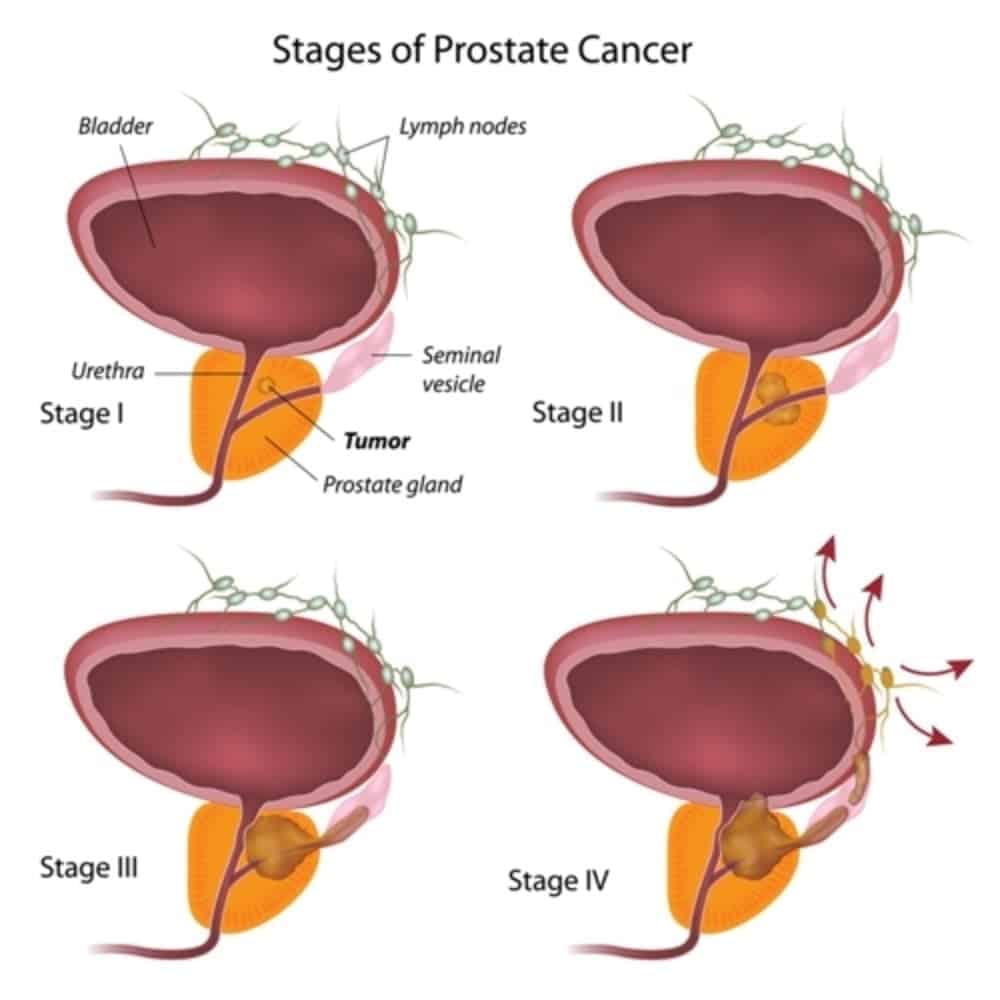Stages

The TNM (tumor node metastasis) is a system that the doctors usually use to identify and explain the stage of the patient in the patient of prostate cancer. A team of doctors uses different diagnostic tests to find out about:
A tumor (T)
Where is the tumor locating in the body, and how large is it?
Node (N)
Is the tumor spreading to the lymph nodes? If yes, then how where and how much is the affected area?
Metastasis (M)
Is the cancer cells spreading and invading other body parts too?
The doctors combine all the screening results from a series of diagnostic tests and then determine the stage of the patient. Following are the four stages of prostate cancer:
-
Stage 1
Stage 1 is the early stage of cancer in which the tumor is growing slowly. The tumor invades one one-half of the prostate gland, and there is no sensation of the tumor. The cell differentiation of the cancer cells is well, and they look like healthy cells.
-
Stage 2
The tumor is present only in the prostate gland. The stage 2 prostate tumor is smaller in size, but the risk of its spreading and growing is much higher. Stage 2 has further sub-stages:
Stage 2A
The half side of the prostate gland has tumor cells in it, and the tumor is not recognizable by the patient. There is an increase in the enlargement of tumors with well-differentiated cells.
Stage 2B
The tumor is present only on the inner side of the prostate gland, and the scans show cancer. The cell differentiation is moderate in this stage.
Stage 2C
The tumor is present inside the prostate glands, and cell differentiation is usually poor.
-
Stage 3
The tumor grows and turns into high-grade cancer, indicating the advancement of cancer, and the spread is also increasing. Stage 3 has further sub-stages:
Stage 3A
In this stage, cancer starts growing towards the outer layer of the prostate gland and spreads into the seminal vesicles.
Stage 3B
The tumor grows out of the prostate gland and invades the nearby organs like bladder and rectum.
Stage 3C
There is poor cell differentiation in the tumor and indicates that there is no healthy cell left.
-
Stage 4
In this last stage, cancer spreads beyond the prostate gland. It may reach up to the nearby lymph nodes in some cases while in other cases, the tumor attacks the distant lymph nodes. Some times in the advanced stage, cancer spreads to the bones and other body organs.

